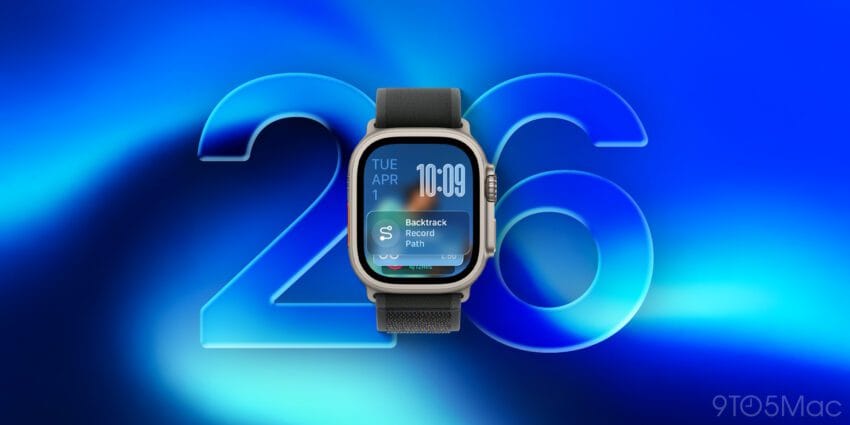
New ios 26 and watchos 26 betas — Apple has released the seventh beta versions of iOS 26 and watchOS 26 for developers, introducing a revamped Blood Oxygen feature for select Apple Watch models in the United States..
New Ios 26 And Watchos 26 Betas
Apple has released the seventh beta versions of iOS 26 and watchOS 26 for developers, introducing a revamped Blood Oxygen feature for select Apple Watch models in the United States.
Overview of iOS 26 and watchOS 26 Beta Releases
On August 18, 2025, Apple made available the latest beta iterations of its mobile operating system, iOS 26, and its smartwatch operating system, watchOS 26. These updates are primarily aimed at developers who are testing new features and functionalities before the general public release. The most significant enhancement in this update is the redesigned Blood Oxygen feature, which Apple initially unveiled the previous week, specifically for the Apple Watch Series 9, Series 10, and Ultra 2 models.
Significance of the Blood Oxygen Feature
The Blood Oxygen feature has been a key health monitoring tool for Apple Watch users since its introduction. It allows users to measure their blood oxygen levels, providing valuable insights into their respiratory health. This feature has gained particular importance in recent years, especially during the COVID-19 pandemic when monitoring respiratory health became crucial for many individuals.
The redesigned version of this feature in iOS 26 and watchOS 26 aims to enhance user experience and accuracy. Apple has focused on improving the interface and usability, making it easier for users to access and interpret their blood oxygen data. The new design is expected to be more intuitive, allowing users to track their health metrics seamlessly.
Compatibility and Availability
The redesigned Blood Oxygen feature will be available for users of the Apple Watch Series 9, Series 10, and Ultra 2 in the United States. This selective compatibility underscores Apple’s strategy to leverage its latest hardware advancements while encouraging users to upgrade to newer models. The availability of the feature is critical for users who rely on the Apple Watch for health monitoring, as it continues to solidify Apple’s position in the health technology sector.
Target Audience and Stakeholder Impact
The primary audience for these beta updates includes developers and tech enthusiasts who are keen to explore the latest features before they are released to the general public. However, the implications of this update extend beyond just developers. Health professionals and fitness enthusiasts who utilize the Apple Watch as part of their health monitoring routine will benefit from the enhanced Blood Oxygen feature.
Moreover, the introduction of this feature could have broader implications for Apple’s ecosystem. As health monitoring becomes increasingly integrated into wearable technology, Apple is positioning itself as a leader in this space. This could influence consumer purchasing decisions, pushing users toward newer models that support advanced health features.
Testing and Feedback Process
As with previous beta releases, Apple encourages developers to provide feedback on the new features. This feedback is crucial for refining functionality and addressing any potential issues before the official launch. Developers can report bugs, suggest improvements, and share their experiences with the updated Blood Oxygen feature, which will help Apple enhance the user experience for the final release.
Timeline for Official Release
While Apple has not provided a specific timeline for the official release of iOS 26 and watchOS 26, it typically follows a pattern of releasing new software updates in September, coinciding with the launch of new hardware. The unveiling of the Apple Watch Series 9, Series 10, and Ultra 2 models suggests that Apple may aim for a synchronized release of the software and hardware, enhancing the overall user experience.
Contextual Background on Health Monitoring Features
The integration of health monitoring features into wearable technology has evolved significantly over the past few years. Apple has been at the forefront of this trend, continuously enhancing its devices with new health-related functionalities. The introduction of features such as heart rate monitoring, ECG capabilities, and, more recently, blood oxygen measurement, reflects a growing consumer interest in health and wellness.
In the context of the ongoing global health crisis, the demand for reliable health monitoring tools has surged. Consumers are increasingly seeking devices that provide accurate health metrics, and Apple’s focus on health technology positions it well to meet this demand.
Future Implications for Apple and the Wearable Market
The introduction of the redesigned Blood Oxygen feature in iOS 26 and watchOS 26 could set a precedent for future updates and features within the Apple ecosystem. As health monitoring continues to gain traction, Apple may explore additional functionalities that cater to users’ health and wellness needs.
Furthermore, the competitive landscape of wearable technology is evolving, with various companies seeking to enter the health tech space. Apple’s commitment to enhancing its health monitoring features may provide it with a competitive edge, ensuring that it remains a preferred choice for consumers looking for reliable and innovative health solutions.
Conclusion
In summary, the latest beta releases of iOS 26 and watchOS 26 bring significant enhancements, particularly with the redesigned Blood Oxygen feature. As Apple continues to innovate in the health technology sector, users can anticipate a more comprehensive and user-friendly experience that aligns with their health monitoring needs. With the official release likely on the horizon, stakeholders in the tech and health industries will be closely monitoring the developments from Apple, as they could influence future trends in wearable technology.
Source: Original reporting
Further reading: related insights.
Was this helpful?
Last Modified: August 18, 2025 at 10:55 pm
1 views















